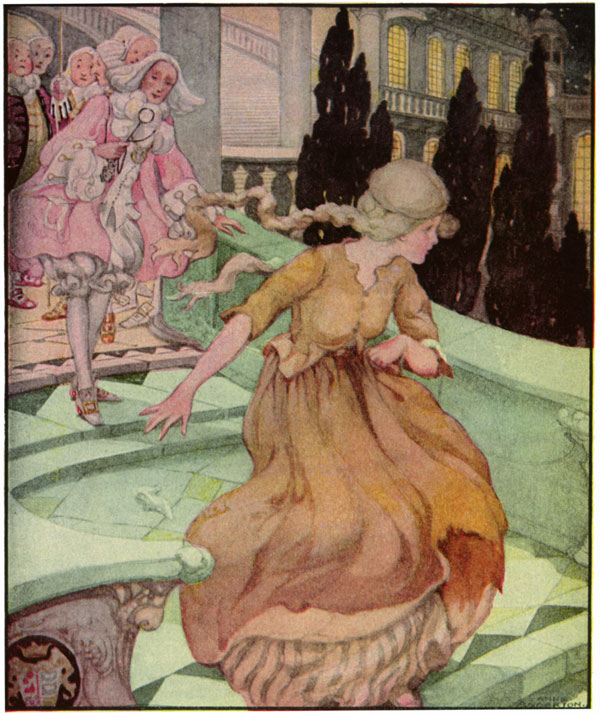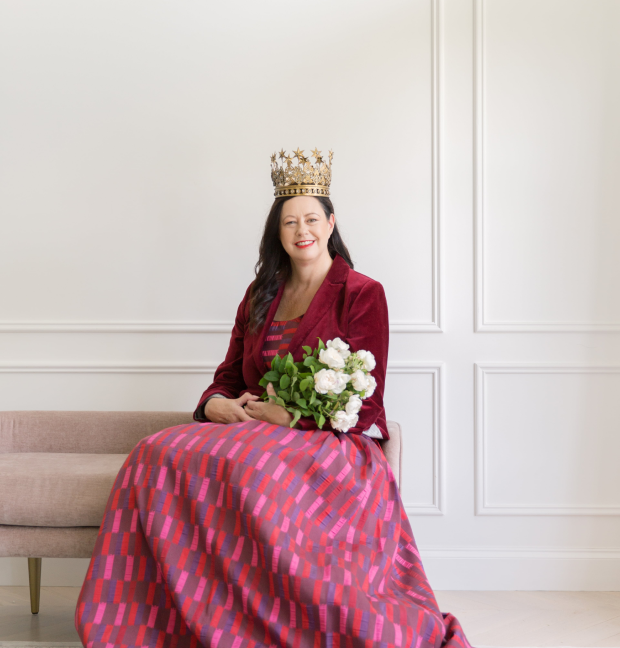
Last week ABC National Radio ran an interview I did a few years ago with the wonderful Richard Fidler. I always get masses of messages and emails afterwards, many querying me about some aspect of the fascinating history of fairy tales.
This was one of them:
Hello Kate,
I am listening to you right now on ABC's Conversation with Richard Fidler. Could you please clarify why you, and many, think that Cinderella's slipper is made of glass. My understanding is that it was a mistake in translation.
I
thought that Perrault made this slipper out of "vair" [vɛʀ] which is the squirrel fur and not out of "verre" [vɛʀ] (glass)
Any thoughts?
Kindest regards,
Tristan
This was my reply to him:
In answer to your question regarding whether or not Perrault’s slippers were made of glass or fur, I can reassure you that they were definitely and unequivocally glass.
Let me explain to you how the misconception arose.
Charles Perrault published the story of "Cendrillon: ou la Petite Pantoufle de verre" (Cinderella, or the Little Glass Slipper) in 1697.
It was not the first Cinderella story, by any means. The earliest clearly recognisable Cinderella motifeme (which means an interconnected chain of tale motifs that make up a recognisable fairy tale) was ‘Ye Xian’ which was first published about 850 AD – so almost 850 years before Perrault. Ye Xian’s slippers were golden – and most Cinderella variants repeat this motif, all the way down to the Grimm brothers’ version ‘Aschenputtel’ in 1812.
However, Perrault’s retelling of the tale is the best known and most influential, partly because of the sheer magical impossibility of the glass slipper. There is no mistake, no mistranslation. He wrote "pantoufles de verre," i.e. glass slippers many times throughout the story.
However, there is a persistent myth that Cendrillon’s slippers were actually made of fur - it’s a myth I regularly and patiently have to debunk.
Honore de Balzac was the one who began it all. In La Comédie humaine: Sur Catherine de Médicis, published between 1830 and 1846, he noted that the word for glass "verre" is a homonym for "vair" which means squirrel fur, for many years a luxury item that only the aristocracy were permitted to wear, according to French sumputuary laws. Balzac wondered if Perrault had misheard the word, while transcribing the story from some anonymous oral storyteller, and that the slipper was meant to be made of fur.
This theory of Balzac’s was later seized upon by Freudian psychoanalysts such as Bruno Bettleheim, author of ‘The Uses of Enchantment’ in 1975, who liked to think it indicated an Oedipal conflict at the heart of the tale – the fur slipper standing in for a vagina and the foot, not to put too fine a point upon it, as a penis.
However, there is absolutely no evidence of a fur slipper in any Cinderella variant – and there are hundreds of Cinderella Tale Types all around the world.
Marian Roalfe Cox – who did the first major academic work on the Cinderella tale type - found only six versions with glass shoes. Many had shoes that were not described, most had shoes that were small or dainty, and quite a few had golden, silver, or jewelled shoes.
Cox believed that other versions with glass slippers were inspired by Perrault’s ‘Cendrillon’, but other academics have wondered if there was an older oral version that featured glass slippers which Perrault drew upon. There is no written record of any glass slipper before Perrault, however, which means most fairy tale scholars believe he invented it. Glass was at the time rare and precious, which was why Louis XIV had the Hall of Mirrors installed at the Palace of Versailles.
Folklorists Iona Opie and Peter Opie disagree, saying: ‘It was (Perrault’s) genius … to see how much more effective in the story would be a shoe of glass, a shoe which could not be stretched, and a shoe in which the foot could be seen to fit. There is no doubt he himself intended the shoe should be of glass.’
Alan Dundes says: ‘One could add only that from a symbolic as opposed to a literal perspective, glass is perfectly appropriate. Glass is a standard symbol of virginity. It is fragile and can be broken only once. In Jewish wedding ritual, the groom crushes a glass under his foot for good luck.’
And as Rebecca-Anne do Rozario points out, squirrel fur was only fashionable in medieval France. No-one at the court of the Sun King would be seen dead wearing fur slippers, let along at a royal court!
If you’d like to study further, try these wonderful books:
Bruno Bettelheim, The Uses of Enchantment, 1975.
Marian Rolfe Cox, Cinderella: Three Hundred and Forty-five Variants of Cinderella, Catskin, and Cap O'Rushes, 1893.
Rebecca-Anne Do Rozario, Fashion in the Fairy Tale Tradition: What Cinderella Wore, 2018.
Alan Dundes, ed. Cinderella: a Casebook.
Heidi Anne Heiner, Cinderella Tales Around the World, 2012

